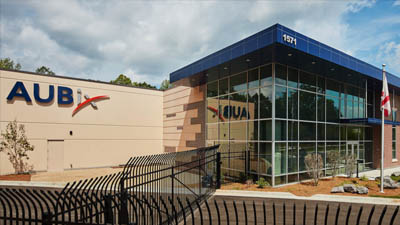My Wi-Fi is smarter than your Wi-Fi! Honestly? Arguing about who has the smarter Wi-Fi is like trying to secure bragging rights for smartest kid, prettiest baby and cutest puppy. Smart is subjective. Or, more accurately, there’s no independent industry measurement for smart. Or even a shared definition. IEEE has never published a standard for Smart Wi-Fi. The Wi-Fi Alliance doesn’t test and certify “smart.” The truth is, anyone can slap “smart Wi-Fi” on a product. Does that mean there’s no way to judge smartness claims? Actually, there are lots of ways. It’s impossible to choose the cutest puppy (no way!), but you can definitely pick the smartest Wi-Fi. Before we start, here are a couple of useful distinctions: Smart Wi-Fi vs. Wi-Fi extenders. Extender is often used interchangeably with repeater or booster. It’s the technology used for improving coverage by amplifying the signal when it starts to weaken over distances. The task of an extender is fairly straightforward—no great intelligence required. Smart Wi-Fi vs. Wi-Fi automation. A designer can automate a repetitive set of actions (or workflow). Smart is usually associated with actions that require the ability to adapt to the unpredictable.
Smart Wi-Fi is confident, not clingy
The smarter the access point (AP), the less attention it needs. One of the reasons that customers love Ruckus products is that our Wi-Fi is very hands-off. If Wi-Fi is really smart, it doesn’t need you to hold its hand (if an AP had hands). Let’s take an example: wireless mesh networking. All Ruckus APs incorporate mesh technology. But it doesn’t require handholding. If you have it enabled (checking a box on the management console), an AP knows when it loses its wired connection. When it does, the AP looks for the best AP in your network to connect to wirelessly, based on the kind of criteria a WLAN engineer would use. The amount of time you spend orchestrating this backup activity: zero (0). Wi-Fi conditions change too fast and would need constant attention from your IT staff to manage well. If you’re getting user complaints about lost connections, dead spots, and agonizingly long waits for service, then your Wi-Fi is too needy. It’s too dependent on IT for tweaking and tinkering when conditions change—and conditions always change with Wi-Fi.
Smart Wi-Fi is attuned (and tunes) to its environment
All radio frequency (RF) signals change from moment to moment. They can falter and fade out when they meet interference, which abounds in the real world: conflicts with other radios, Electromagnetic Interference (EMI), cable length, bad cables, thick plaster, concrete, metal, and even static electricity. When you plan a WLAN deployment, you start with a heat map for the best AP placement (a heat map is a kind of site survey for figuring out strong and weak RF signal areas). But when conditions change—which can happen in a minute or over time—APs aren’t always smart enough to adapt. Take antenna technology. Most APs use fixed antenna technology: either transmitting in a single direction or all directions at the same time. You pick the antenna type based on the heat map. If conditions change, you’ll probably have to dispatch a WLAN engineer with a calculator, meter and screwdriver to reposition or change out the AP. Ruckus APs use a patented RF technology called BeamFlex+. It’s a smart antenna technology, because it can sense user locations and device orientation and adapt. It can transmit in all directions or a single direction. It can strengthen the signal and extend the coverage area. Smart antenna technology goes hand-in-hand with the software built into the APs that allows them to monitor the current conditions and make changes on the fly to optimize the signal. Combining smart technologies adds up to even smarter Wi-Fi.
Ready for Smart Wi-Fi?
It comes down to this: do you want to spend time tweaking your Wi-Fi to keep it performing and optimized? If you’d like to trust more and tweak less, then ask your Wi-Fi vendor, “What makes you so smart?” Then you can take your problem-solving time and apply it to other high-impact technology areas, like IoT.














